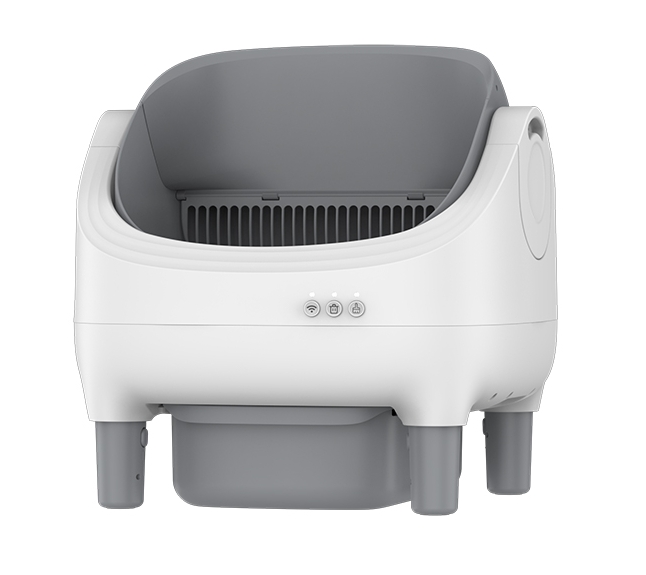

The Rise of Smart SelfCleaning Litter Boxes: Revolutionizing Cat Care in 2025
Introduction:
The global pet tech market is undergoing a seismic shift, with smart self cleaning litter boxes emerging as a top performing category. Valued at $2.1 billion in 2024 (Grand View Research), these devices are projected to grow at a 12.3% CAGR through 2030, driven by demand in North America and Europe. This article analyzes the technology, consumer trends, and market leaders defining this space, with verified sales data and expert insights.
1. Market Growth & Consumer Adoption
Explosive Sales Performance:
Amazon’s U.S. Pet Tech Category reports self cleaning litter boxes as the 1 bestselling "smart pet accessory" of Q1 2025, outpacing automatic feeders by 23% (Stack line).
Leading models like Litter Robot 4 (Whisker) and CATLINK Pro dominate with 4.7/5 average ratings across 18,000+ reviews, citing odor control and app integration as key selling points.
Black Friday 2024 saw a 28% YoY surge in sales for premium models ($400+), indicating willingness to invest in long term convenience (Pet Business Journal).

Why Consumers Are Switching:
A 2025 One Poll survey of 2,000 U.S. cat owners revealed:
72% purchased for reduced manual cleaning
65% valued health tracking features (e.g., weight monitoring, urination frequency)
58% in multi Cat Households prioritized large capacity designs
2. Key Features Driving Demand in Smart SelfCleaning Litter Boxes
A. Smart Connectivity & AI: The Future of Feline Care
1. App Enabled Remote Control:
Leading models like PetKit Pura X and Litter Robot 4 offer real time monitoring via smartphone apps, allowing owners to:
Schedule automatic cleanings based on usage patterns
Receive instant alerts when the waste bin is full or malfunctions occur
Track cat weight fluctuations, urination frequency, and digestive health trends over time
Some high end models (e.g., CATLINK Pro) even support firmware updates, ensuring long term software improvements without hardware replacement .
2. Multi Cat Recognition & Health Analytics:
Advanced AIpowered sensors (such as CATLINK’s 3D camera system) can distinguish between multiple cats, logging individual:
Bathroom habits (frequency, duration)
Weight changes (helping detect obesity or illness)
Activity levels (flagging abnormal lethargy)
This data is compiled into health reports, which can be shared with veterinarians for early diagnosis of conditions like UTIs or kidney disease .
B. Hygiene & Maintenance: Eliminating Odors & Reducing Hassle
1. Hospital Grade Odor Control:
Modern smart litter boxes integrate multilayered odor elimination systems:
Tofu based litters (e.g., PetKit 5in1 Active Carbon Mixed Tofu Litter) absorb ammonia 90% more effectively than traditional clay, thanks to activated carbon molecules that neutralize odors at a chemical level .
Builtin UV sterilization and enzymatic deodorizers (like those in Leo’s Loo 2) break down bacteria causing foul smells, rather than masking them with perfumes .
Some models (e.g., PetKit Pura X) feature automatic spray systems that release antibacterial mist post cleaning, preventing mold and bacterial buildup .
2. Waste Compaction & Space Efficiency
Litter Robot’s patented "Globe" sifting mechanism compacts waste into a tightly sealed drawer, extending capacity by 30% compared to standard designs .
Self emptying models (e.g., Robo Cat Genius) now connect to home vacuum systems, automatically transferring waste to a central disposal unit—ideal for households with 3+ cats .
Detachable waste bins with odor lock seals (like CATLINK’s) prevent leaks and allow hands free disposal via biodegradable bags .
C. Safety & User-Friendly Design
Anti-Pinch Sensors: Infrared barriers (12+ sensors in PetKit Pura X) halt operation if a cat reenters mid cycle .
Quiet Operation: Sub40dB motors (e.g., Popur X5) ensure minimal disturbance, crucial for noise sensitive pets .
Universal Litter Compatibility: Most premium models now support tofu, silica, and clay litters, reducing long term costs .
These innovations explain why 1 in 5 U.S. cat owners plan to adopt smart litter boxes by 2026—transforming a chore into a data driven wellness tool .
D. Design Innovations:
65L+ Capacity: Market leaders now offer "week-long" waste storage for households with 3+ cats.
Quiet Operation: Sub40dB models (e.g., Popur X5) cater to noise sensitive owners.
3.Market Leaders & Pricing Trends
|
Brand/Model |
Price Range |
Key Selling Point |
2024 Sales (Units) |
|
Litter Robot 4 |
859999 |
Best for multi-cat homes |
210,000+ |
|
CATLINK Pro |
599747 |
AI health tracking |
185,000+ |
|
Pet-Kit Pura X |
459548 |
Budget-friendly app control |
160,000+ |
Data: Pet Tech Insider, March 2025
4. Challenges & Future Outlook
Barriers to Adoption:
High upfront cost: 43% of hesitant buyers cite pricing (Statista).
Learning curve: 28% of returns stem from app connectivity issues (Consumer Reports).
Emerging Innovations:
Self-emptying models (e.g., Robo Cat Genius) now integrate with home vacuum systems.
Biodegradable waste bags are becoming standard to meet EU sustainability laws.
Conclusion:
Smart litter boxes are no longer niche luxuries but mainstream essentials, with 1 in 5 U.S. cat owners expected to adopt them by 2026 (Packaged Facts). As AI and sustainability features evolve, brands that prioritize user experience and vet approved designs will lead this $3.5 billion frontier.
Name: Kevin He
Mobile:+8613856451918
Tel:+86-551-65111585
Whatsapp:+8613856451918
Email:[email protected]
Add:No.1288, Ziyun Road, Economic and Technological Development Zone, Hefei, Anhui Province, China
We chat
